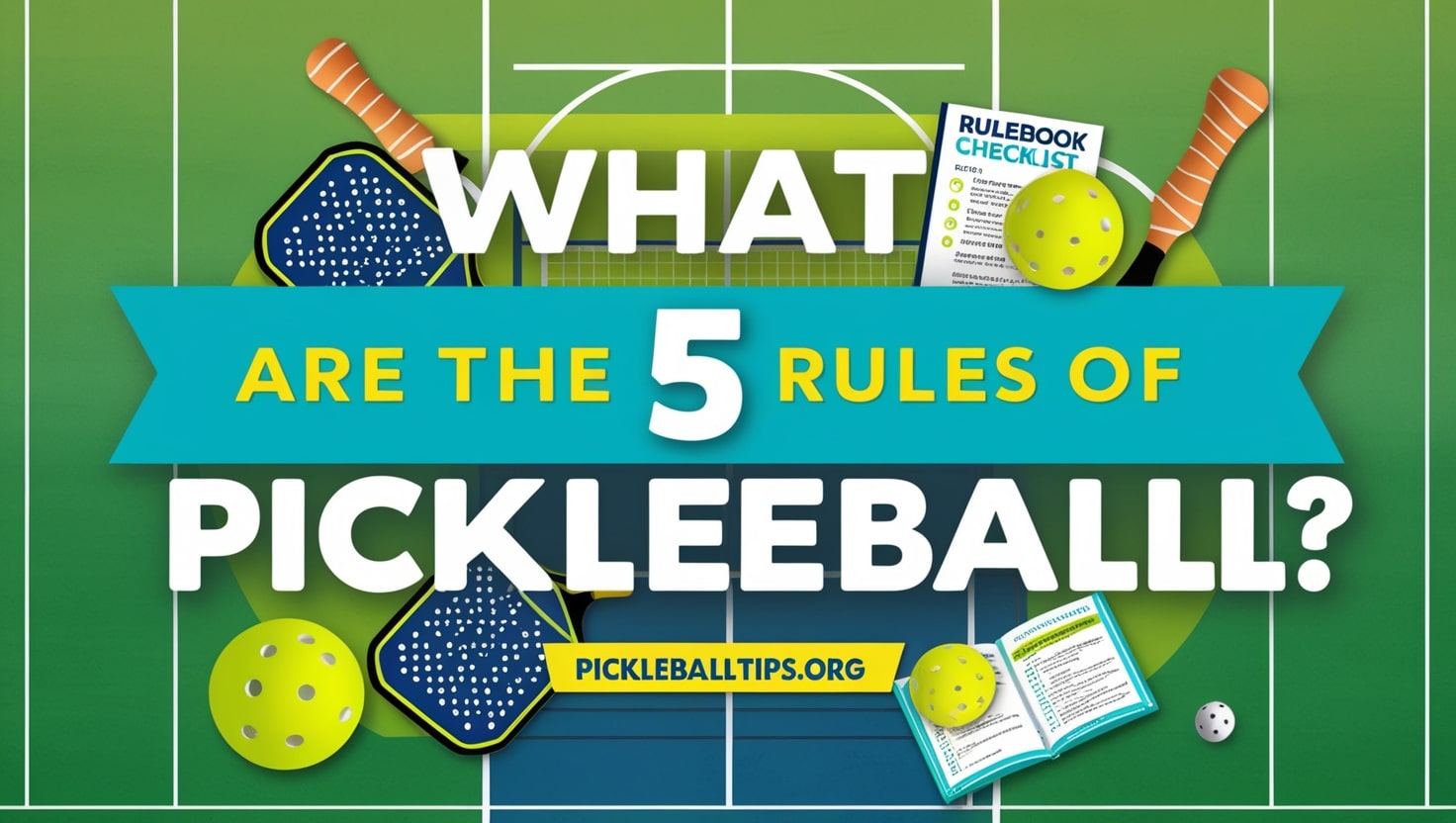Pickleball is one of the fastest-growing sports, blending elements of tennis, badminton, and table tennis. It’s easy to learn, fun to play, and fosters a sense of community among players. While the game is simple, it’s essential to understand the rules to play effectively and enjoy the sport. If you’ve ever wondered, “What are the 5 rules of pickleball?”, this guide is for you. We’ll dive deep into the core principles that govern pickleball, ensuring you’re well-prepared to hit the court.
1. The Two-Bounce Rule

The two-bounce rule is a fundamental aspect of pickleball, designed to encourage longer rallies and minimize aggressive net play at the start of a point. Here’s how it works:
- When the ball is served, the receiving team must let it bounce once before returning it.
- After the return, the serving team must also allow the ball to bounce once before hitting it back.
Only after these two bounces can players volley (hit the ball in the air without a bounce). This rule ensures that both teams start the rally on equal footing and emphasizes strategic play over pure aggression.
2. Serving Rules
The serve is the starting point of every pickleball rally, and it comes with specific guidelines to maintain fairness:
- Underhand Serve: The ball must be struck below the waist, using an underhand motion. Overhand serves are not permitted.
- Diagonal Placement: Serves must travel diagonally across the court to the opposite service box.
- Behind the Baseline: The server must remain behind the baseline while serving and can only step into the court after making contact with the ball.
- Single Attempt: Only one serve attempt is allowed, except in the case of a let (when the serve touches the net but lands in the correct service box).
Failing to adhere to these rules results in a fault, and the serve is lost.
3. The Non-Volley Zone (Kitchen)
The non-volley zone, commonly referred to as the “kitchen,” is a 7-foot area on both sides of the net. It plays a critical role in the dynamics of pickleball:
- No Volleying: Players are prohibited from volleying the ball while standing in the kitchen. This rule prevents dominant net play and encourages strategic positioning.
- Momentum Rule: If a player volleys the ball outside the kitchen but their momentum carries them into it, it’s considered a fault.
- Groundstrokes Allowed: Players can hit the ball within the kitchen as long as it has bounced first.
Mastering the art of playing around the kitchen is key to excelling in pickleball.
>>> Who Owns Pickleball?
4. Scoring Rules
Pickleball has a unique scoring system that can be a bit tricky for beginners. Here are the main points:
- Only the Serving Team Scores: Points can only be scored by the team that is serving. The receiving team aims to win the rally to gain the serve.
- Winning a Rally: To win a point, the serving team must successfully win a rally while adhering to all rules.
- Score Announcements: Before each serve, the server announces the score in the format of “server’s score, receiver’s score, server number”. For example, if the score is 3-2-1, it means the serving team has three points, the receiving team has two, and the first server is serving.
A standard game is played to 11 points, but a team must win by at least two points.
5. Fault Rules
Understanding what constitutes a fault is essential for fair play. A fault occurs when a player:
- Hits the ball out of bounds.
- Fails to clear the net.
- Volleys the ball from within the kitchen.
- Violates the two-bounce rule.
- Makes an illegal serve (e.g., hitting it above the waist).
Faults immediately end the rally and either result in a point for the serving team or a turnover of the serve to the opposing team.
Additional Tips for New Pickleball Players
While the five rules above form the backbone of pickleball, here are a few additional tips to enhance your gameplay:
- Positioning is Key: Stay alert and maintain good positioning on the court. Playing closer to the baseline during serves and returns can give you an advantage.
- Communication in Doubles: If you’re playing doubles, communicate with your partner to avoid confusion over who will hit the ball.
- Practice Your Dinks: Dinking—hitting the ball softly into the opponent’s kitchen—is a crucial skill that can disrupt your opponent’s rhythm.
- Stay Active: Pickleball is as much about agility as it is about skill. Keep moving and anticipate your opponent’s shots.
- Have Fun: Remember, the ultimate goal of pickleball is to enjoy the game and connect with others.
Why Understanding the Rules Matters
Learning and adhering to the five main rules of pickleball will not only make you a better player but also enhance your enjoyment of the game. These rules promote fairness, encourage strategic play, and create a welcoming atmosphere for players of all skill levels.
Whether you’re a beginner or a seasoned pro, staying updated on the rules ensures that you play the game as intended. It also helps in resolving disputes on the court, allowing everyone to focus on having fun.
Conclusion
Pickleball’s charm lies in its simplicity and inclusivity. By mastering the five fundamental rules—two-bounce rule, serving rules, kitchen regulations, scoring system, and fault guidelines—you can confidently join any game and compete with players of all levels.
Thank you for reading this guide on “What are the 5 rules of pickleball?” on pickleballtips.org. We hope this article has provided you with valuable insights and inspiration to hit the court with confidence. Happy playing!
